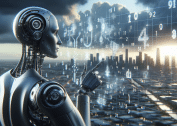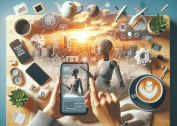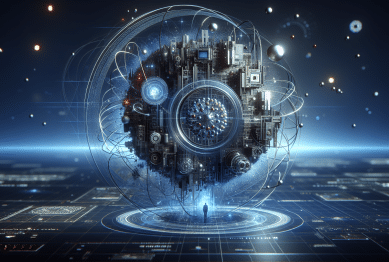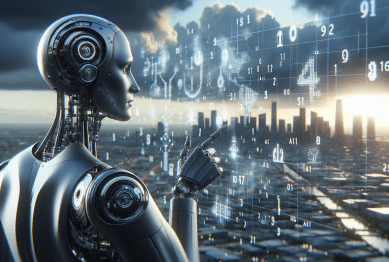Artificial intelligence has quietly woven itself into daily routines, shaping experiences with technology in surprising ways. From smart recommendations to safer streets, explore how AI’s invisible hand impacts decisions, entertainment, transport, and more, all while blending seamlessly into modern living.
AI Recommendations Guiding Daily Choices
Browsing for a new series on a streaming platform? The suggestions that seem perfectly tailored are thanks to intelligent recommendation systems behind the scenes. Artificial intelligence processes masses of data from previous viewing habits, trending topics, and even the time of day you watch. These smart algorithms learn preferences over time, leading to increasingly precise recommendations that turn finding entertainment into a seamless process. For music lovers, AI-driven playlists adapt in real time, feeding you fresh tracks based on past likes and skipped songs, continuously refining choices to keep playlists novel yet familiar.
It’s not just movies or music where AI works quietly. When shopping online, the product recommendations or perfectly timed sale alerts often rely on predictive analytics powered by artificial intelligence. These systems evaluate browsing patterns, purchases, and even abandoned carts to determine what catches interest. Over time, such tailored experiences reshape the way people discover new brands and products, taking the guesswork out of digital shopping. This personalization also helps businesses understand shifting preferences, fine-tuning their offerings for millions of users at once.
Even food delivery apps use artificial intelligence to anticipate cravings. Restaurant suggestions, time-to-delivery estimates, and convenient meal combinations are all driven by predictive models crunching vast datasets in the background. These small conveniences feel intuitive, but they stem from sophisticated AI actively learning individual tastes and routines. In essence, machine intelligence now acts as a discreet digital assistant, quietly smoothing the flow of countless decisions all day long. For most users, the process remains invisible—but its impact can be profound.
Smart Devices Making Homes More Responsive
The modern smart home is a showcase for artificial intelligence in action. Voice assistants perched on countertops interpret commands and answer questions, using natural language processing to understand and respond. Over time, these systems begin to recognize unique voices, adjust replies, and even suggest new features based on usage patterns. It’s AI at the core, turning an appliance into a helpful, context-aware companion. Thermostats, lights, and security systems are also getting smarter, learning preferred schedules and adjusting settings automatically to balance comfort with energy efficiency.
Home security cameras powered by AI can differentiate between a harmless squirrel and a human visitor, sending meaningful alerts instead of false alarms. These smart systems even track activity over time, flagging unusual behaviors. Robot vacuums map rooms autonomously, adjusting cleaning routes depending on foot traffic and likely messes. It all feels simple—say a command, get a result, come home to a clean carpet—but what makes it seamless is the unseen work of deep learning behind it all.
Smart appliances are also connecting to other home gadgets, with AI coordinating everything from kitchen timers to door locks. This interconnected intelligence can anticipate needs, like preheating the oven when it senses a grocery delivery. The result is a living space that anticipates activity and adapts in subtle ways, guiding users toward greater convenience and safety. Everyday comfort, now boosted by the latest in sensor fusion and artificial intelligence research, makes home life a little easier without requiring extra thought or effort from you.
AI-Assisted Communication and Productivity Tools
Think of how emails now finish themselves as you compose them or how smartphone keyboards seem to predict exactly the right word. These efficiency boosts stem from artificial intelligence embedded in productivity tools. Autocomplete, grammar correction, and smart reply suggestions rely on language models trained on vast collections of writing. These models recognize intent, style nuances, and even context. Factor in voice recognition for dictation—AI is dissolving barriers to productivity, making technology bend to conversational input rather than strict command syntax.
Virtual meeting platforms now offer live transcriptions and automatic highlights, condensing hours of conversation into crisp summaries. AI in project management software automates scheduling, tracks task dependencies, and sends reminders—all based on past working habits and team priorities. Rather than passively storing information, these intelligent tools proactively assist, learning from user interactions with each session. The less time spent managing logistics, the more focus is left for real creative problem-solving and collaboration.
Language translation powered by artificial intelligence has also become dramatically smarter, allowing seamless multilingual communication in chat, documents, and even live phone calls. This underlying AI constantly improves as it ingests new data, bridging gaps that once created friction in global business or travel. For many, these features simply appear as helpful add-ons, but behind their simplicity lies extensive machine learning architecture built to make digital conversations smoother and smarter by the day.
Transportation and Navigation Powered by Algorithms
Missed the traffic jam on your route? Thank artificial intelligence. Navigation apps today analyze massive amounts of location data—traffic speed, accidents, road closures—in real time. These systems reroute based on AI predictions of traffic flows, estimating arrival times with remarkable precision. Machine learning models even anticipate future congestion by factoring in time of day, weather, and special events, ensuring navigation stays accurate whether commuting home or traveling through unfamiliar cities.
On public transit, AI optimizes schedules, predicts crowd levels, and even powers digital ticketing systems. Self-driving cars are perhaps the most headline-grabbing advance, but behind the wheel of every modern vehicle lies a collection of intelligent software systems. From automatic emergency braking to adaptive cruise control, AI is constantly monitoring surroundings and making millisecond decisions to improve safety and comfort. For cyclists or scooter riders, shared mobility platforms use AI to manage fleet distribution and adapt to peaks in demand.
Even walking navigation benefits from artificial intelligence. Maps now consider real-time sidewalk closures, crowd density, and preferred walking speeds. These features, enabled by continuous sensor data and AI analytics, reflect countless variables processed in seconds—making travel more efficient, accessible, and safe. In effect, AI has become an invisible co-pilot, keeping millions of daily journeys smooth and hassle-free with every reroute or update calculated on the fly.
Healthcare Gets a Digital Intelligence Boost
Artificial intelligence is transforming health and wellness by helping medical professionals sift through oceans of information. Diagnostic support tools can now suggest possible illnesses by analyzing symptoms, lab reports, and even X-ray images using deep learning. These tools point doctors toward likely scenarios, which they can then confirm, accelerating diagnoses and reducing the chances of errors. For patients, symptom checker apps and virtual health assistants offer early guidance, often suggesting if a doctor visit might be warranted.
Wearables, such as smart watches, monitor heart rate, sleep quality, and physical activity in real time. Embedded AI detects irregular patterns, flagging concerns like arrhythmias promptly. Some systems even alert emergency contacts or healthcare providers, bridging the gap between personal observation and professional care. Predictive analytics in these gadgets mean users receive more personalized recommendations for diets, fitness, or preventative care without constant manual input.
Hospitals increasingly rely on artificial intelligence to predict patient flow, manage resource allocation, and flag high-risk cases. Pharmacy algorithms identify harmful drug interactions, while AI chatbots answer questions and triage symptoms. All these advances help streamline healthcare delivery, enhance patient experiences, and support better health outcomes. While humans remain central, the supporting role of artificial intelligence continues to grow with each innovation.
Behind the Scenes: AI in Security and Fraud Prevention
Ever received a bank alert about unusual account activity? Artificial intelligence makes these real-time warnings possible. Financial institutions deploy machine learning that continuously monitors transactions for subtle deviations from your normal behavior. Even tiny risks trigger further investigation, helping guard against identity theft or account hacking. The speed and accuracy with which these alerts arrive are a direct result of ongoing advances in pattern recognition.
On the cybersecurity front, AI tools scour email attachments, URLs, and downloads for signs of phishing or malware, learning to detect new threats with each attempt. This constant vigilance empowers businesses to respond more swiftly to evolving dangers. Online shopping also benefits—they use intelligent systems to weed out counterfeit listings, unsafe sellers, and fraudulent payment attempts, giving customers greater peace of mind when entering personal or financial information.
Facial recognition technology and AI-powered surveillance support airport security, workplace authentication, and even unlocking smartphones without a code. While these systems remain controversial and require careful regulation, their presence highlights how much daily security depends on intelligent automation. Striking the right balance between safety, privacy, and convenience hinges on transparent deployment of the latest artificial intelligence breakthroughs.
References
1. Marr, B. (n.d.). How Is Artificial Intelligence Used In Everyday Life? Retrieved from https://www.forbes.com/sites/bernardmarr/2021/12/13/how-is-artificial-intelligence-used-in-everyday-life/
2. World Economic Forum. (n.d.). From AI to Automation: The Impact on Work and Life. Retrieved from https://www.weforum.org/agenda/2022/10/artificial-intelligence-everyday-life-automation/
3. MIT Sloan. (n.d.). How AI is changing your everyday life. Retrieved from https://mitsloan.mit.edu/ideas-made-to-matter/how-ai-changing-your-everyday-life
4. Mayo Clinic. (n.d.). Artificial intelligence in healthcare: Past, present and future. Retrieved from https://www.mayoclinic.org/medical-professionals/clinical-updates/ai-healthcare
5. IBM. (n.d.). What is Artificial Intelligence? Retrieved from https://www.ibm.com/topics/artificial-intelligence
6. U.S. Department of Transportation. (2023). How Artificial Intelligence is Reshaping Transportation. Retrieved from https://www.transportation.gov/policy-initiatives/ai/how-artificial-intelligence-reshaping-transportation









